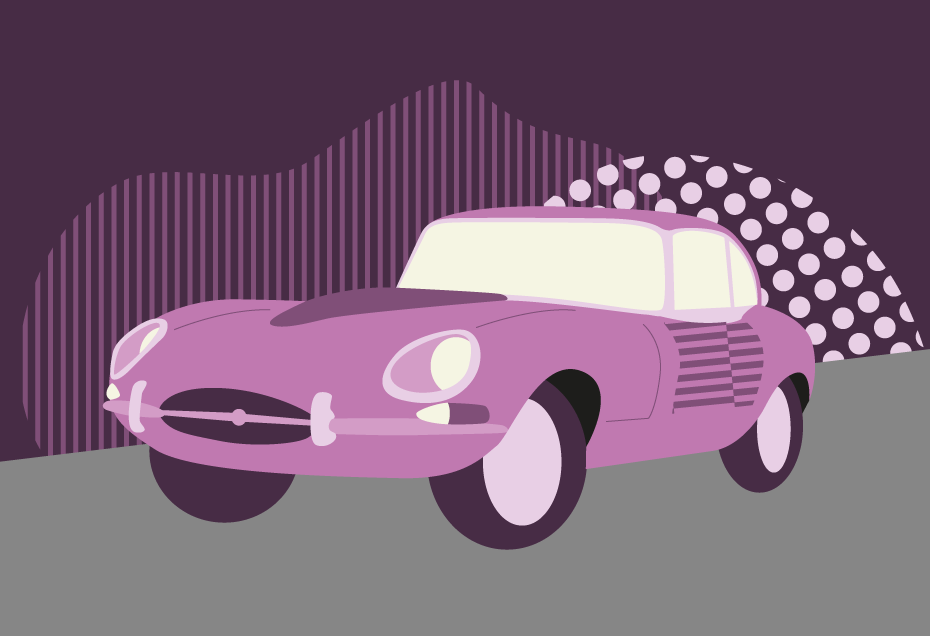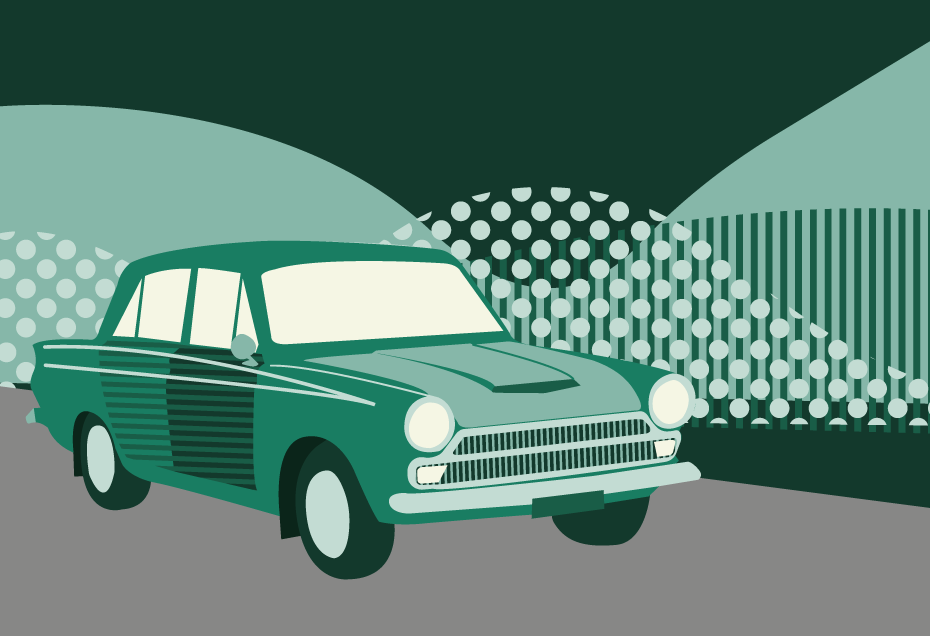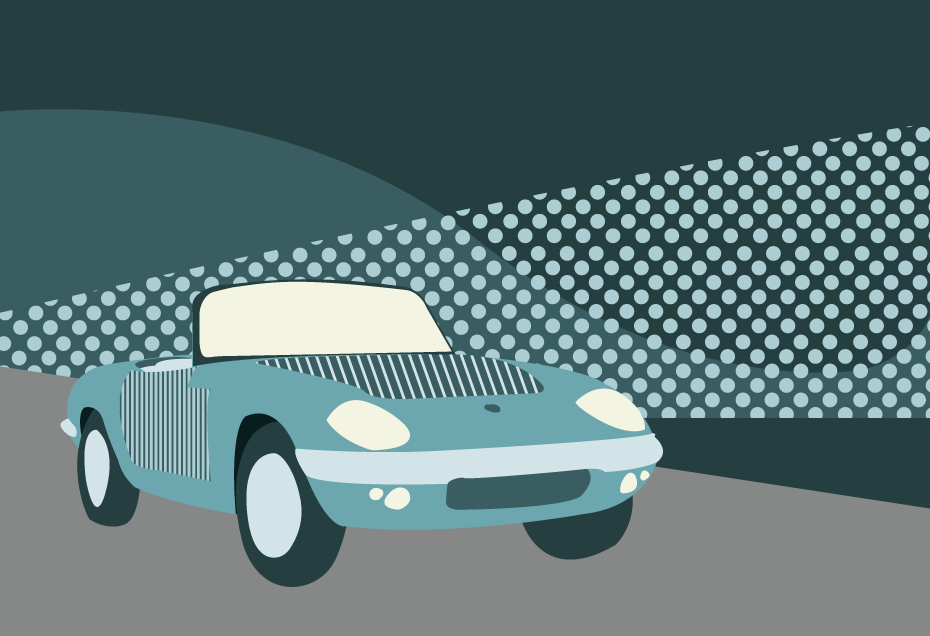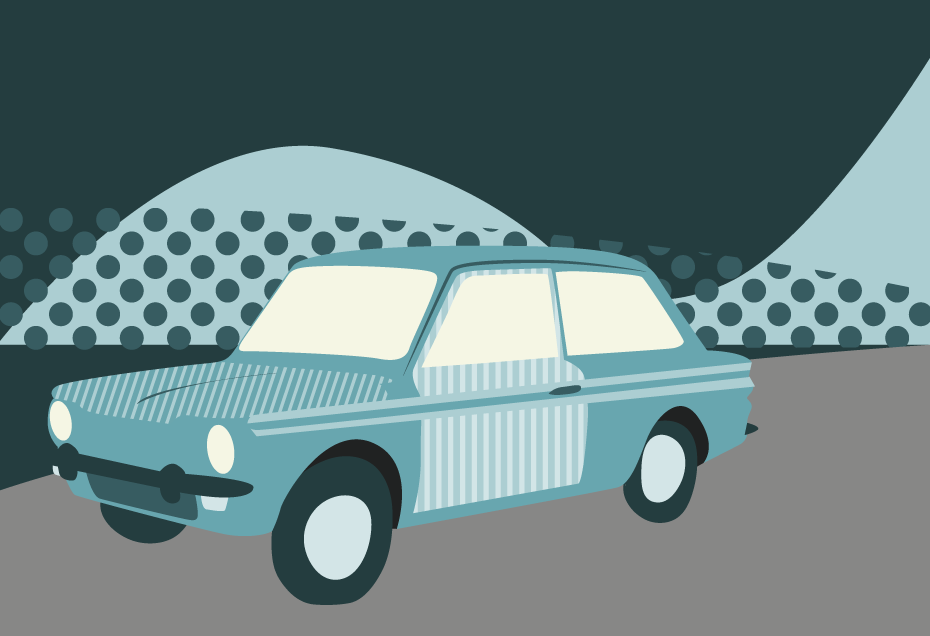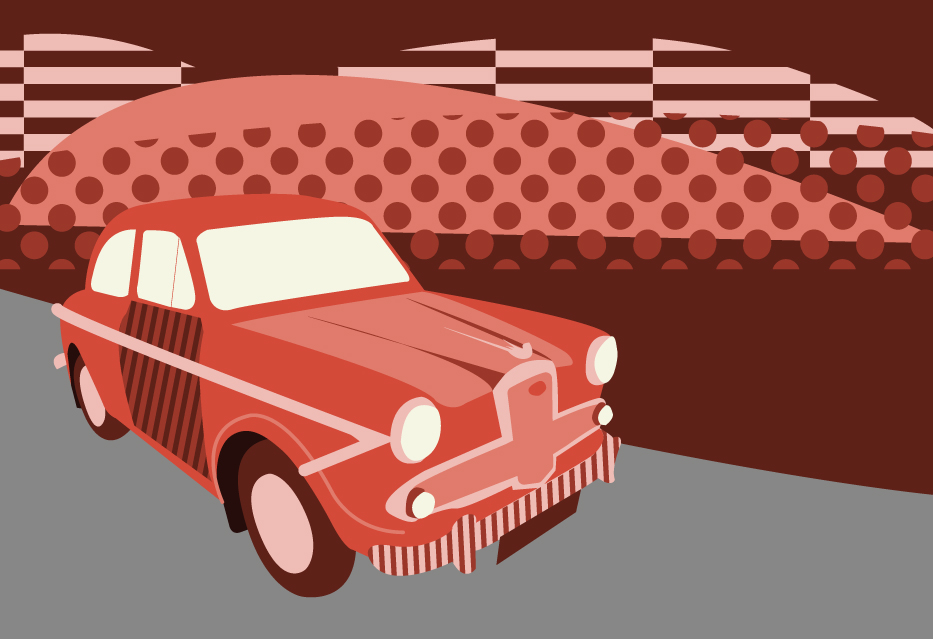Bold, beautiful, brilliant, and a breakthrough in fast GT motoring, the Jaguar E-Type had it all – including a relatively affordable price.
Its ease of use, stunning design, and race-bred handling combined with a potential 150mph redefined the public’s expectations of sports car motoring.
How did Jaguar get it so right?
Enzo Ferrari was said to have called it “the most beautiful car ever made” on its launch in 1961, and plenty clearly agreed with the Italian maestro.
To this day, in any list of the most beautiful, or most iconic, cars in the world, the Jaguar E-Type is never far from the top.
Its seemingly never-ending bonnet and tapering rear end may have taken the plaudits, but the car’s beating heart was the venerable DOHC inline-six cylinder XK engine, originally dating back to 1948’s XK120.
As the XK120 morphed into, first, the XK140 and then the XK150, the engine’s power output grew to cope with each successive car’s additional weight.
By 1960, the newly-bored out 3.8-litre engine was capable of pumping out 265bhp, and was a natural choice for the next generation of Jaguar sports car.
Development and prototypes
The key men behind the E-Type’s development were Jaguar’s technical director William Heynes, a veteran of Browns Lane since 1935, and Norfolk-born aerodynamics expert Malcolm Sayer, who joined the company in 1951.
Both men had worked on aircraft production during the war, Sayer for the Bristol Aircraft Company, and the pair employed a mathematical approach to aerodynamic work, concentrating on racing car air flow design.
It led initially to the C-Type, successful at Le Mans in 1951 and 1953, and the D-Type, which won three times in a row from 1955 to 1957, the last two in the hands of privateer teams.
Having withdrawn from motorsport at the end of the 1956 season, Jaguar’s motorsport division was tasked with producing a road car based on the slippery D-Type, a mouthwatering prospect.
Heynes took charge of the project, with the first prototype, E-type 1 Aluminium, or E1A, completed in May 1957.
Using a central monocoque tub, the car was shorter than the eventual production E-Type, and differed from the D-Type by employing a new independent rear suspension set-up.
Powered by the 2.4-litre XK engine from 1955, it produced only 120bhp but still proved a fast, long-legged cruiser when tested.
The second significant prototype, E2A, was much closer in style to the finished product, sharing the E-Type’s wheelbase but still based on the D-Type and built to race at Le Mans in 1960, though to be the perfect testing ground for the future road car.
The launch at Geneva
The E-Type caused a sensation when Jaguar boss Sir William Lyons unveiled it at the Geneva Motor Show in March, 1961.
Two cars were present at the show, one on the stand, and one which enabled Lyons to show the media the car in more detail.
More than 200 members of the Press gathered around car registration 9600HP, and the price of the new car caused almost as much of a buzz as its glorious body.
Cheaper than the outgoing XK150, at £2097 for the roadster and £2196 for the coupe, the E-Type was considerably less costly than cars which offered similar performance from Ferrari and Aston Martin.
Powered by the 3781cc unit from the XK150S and married to a four-speed Moss transmission, the engine was fed by triple SU carburettors, with Jaguar claiming an output of 265bhp.
The car was available, initially for export only, in two-seat roadster or coupe, which featured a hatchback-style boot opening.
Like our illustration of the Jaguar E-Type at the beginning of the article?
Download a free high-quality poster version here.
The media reaction
Press reaction was overwhelmingly positive, with The Autocar and The Motor having pre-tested the two cars presented at Geneva, coupe 9600HP and roadster 77 RW respectively, under an embargo.
Autocar called it “a major advance, amounting to a breakthrough in design of high performance vehicles for sale to the public”.
“The E-Type Grand Touring Coupe is vastly superior to its predecessors in a number of respects, and to competitors sold within £1,000 of its price,” the magazine reported.
“It offers what drivers have so long asked for, namely, sports-racing-car performance and handling, combined with the docility, gentle suspension and appointments of a town car.”
The testers, former second world war bomber Maurice A Smith, and Peter Riviere, took the car to 60mph in just 6.9 seconds and achieved a top speed of 150.4mph.
Its formidable list of acceleration figures were, they said, “the best so far recorded, in almost any part of the range, in an Autocar road test”.
Low down torque, peaking at 260lb ft at 4000rpm, enabled the car to pull smoothly from little more than 10mph in top gear up to 140mph and more, the pair describing the surge from 50mph to 130mph as “quite breath-taking”.
It wasn’t just the power that impressed, with “road adhesion of an order seldom experienced before”.
“At 140mph the car seems in one sense to be clinging to the road, so stable is its progress, yet in another sense it seems to be flying over it.
“For most drivers the limiting factor in speed of cornering of this car will be their own skill.”
The rack and pinion steering was light at all speeds, the brakes were tailored to stop the car quickly from high speeds, but the ventilation – in common with many cars of the time – left a little to be desired.
All in all, the car was a huge hit, Jaguar making possible “a new level of safe, fast driving”.
“Critics will find precious little to complain about and competitors will be hard put to match any of the main talking points of performance, handling, ride comfort and price,” the magazine concluded.
Motor Sport magazine’s Bill Boddy called the E-Type “sensational”, “about as fast as they come, immensely accelerative, endowed with extremely good road-holding, handling and braking characteristics, able to be driven by grandma at 15 mph or less in top gear”.
Good news for sports car-driving grandmas everywhere.
Boddy said the price “makes the term ‘value-for-money’ seem scarcely appropriate! For the E-type costs only about a third of the price of a GT Maserati or Ferrari of something like equivalent performance, and less than half the price of an Aston Martin DB4GT!”
He described the car as “delightfully fierce-looking” from the rear, “while the beautiful curves of the body are quite breathtaking at first sight. I felt glad to be an Englishman standing in Coventry viewing this amazing new British car!”
On the road, the recently-opened, speed limit free M1 no less, the Jaguar almost blew Boddy’s mind.
“What followed was quite fantastic—remembering that an honoured British name and not one hailing from Modena, Marenello or Stuttgart graced our motor car,” he wrote.
“Put the E-type in top gear and it just goes faster and faster, until it is cruising along M1 at 6,100 rpm, which we calculated to be a pretty genuine 155 mph. At this speed it is possible for driver to converse with passenger in normal tones, wind-noise being low and little noise coming from transmission or final-drive – a fantastic experience!
“The E-type is a staggering motor car on all counts; safety, acceleration, speed, equipment, appearance – all are there, for a basic price of only £1,480. Staggering!”
Performance on the test cars was no doubt helped by the fitting of Dunlop R5 racing tyres, while there is some evidence that the test cars were provided with tweaked engines to get those headline-grabbing, 150mph performance figures.
Restoring 9600HP, Jaguar historian Philip Porter found the engine to be running with a gas-flowed cylinder head matched to the inlet and exhaust manifolds – potentially adding 20-25bhp to the standard 3.8-litre engine.
No matter, demand was high for the new E-Type, although industrial disputes at Smiths, who supplied the dashboard dials, and SU Carburettors restricted production to 2160 in the launch year.
Despite further industrial strife, Jaguar produced 6266 E-Types the following year.
Continuous improvements
By 1963, a number of subtle improvements had been made, but first gear remained without synchromesh, unlike the more humble Ford Cortina…
Testing an updated coupe in April of that year, Autocar noted a higher ratio back axle, resulting in more relaxed and economic high-speed cruising and boosting top speed to 155mph.
A thermostat-controlled electric fan replaced the engine driven one, while the door and boot-lid seals were improved.
More importantly, the brakes – already impressive in stopping the car from high speeds – were given greater servo assistance to improve effectiveness at low speeds.
Two years may have passed since the car’s introduction, but Autocar was no less gushing in its praise.
“This E-Type is a truly remarkable car in several respects: it is deceptively fast yet its handling is so good and natural that drivers used to speeds 20 or 30mph less are not embarrassed by the unaccustomed rate of progress,” it said.
“By using only a part of the terrific performance available, two occupants can make a relaxed, satisfying and quite economical journey, and still be much quicker and at the end less tired than in almost any other car.
“Like other Jaguars this E-Type coupe represents outstanding value for money. It is obviously built for a special kind of motoring and its tremendous, effortless performance, with which slow speed docility is also combined, is for the connoisseur of grand touring.”
The only gripe was the gearbox, which the magazine said was “unworthy of the car”.
“Very slow, deliberate changes have to be made to avoid a crunch – particularly up into second gear,” it wrote. “Bottom is without synchromesh and at high rpm sounds like that of a vintage car.”
Famous owners and a bigger engine
When it was launched, Jaguar made sure that E-Types were made available to motor racing personalities so that the car would be seen around the paddocks.
But as the car’s legend grew, so more and more celebrities bought into a car that, along with the Mini, became a symbol of the cultural landscape in the Sixties.
As The Beatles set out to conquer America, George Harrison bought a coupe, complete with a record player, while Frank Sinatra, George Best, Roy Orbison and Steve McQueen joined a long list of celebrity owners.
The E-Type had very quickly become the car to aspire to, and one that, while not cheap, was more within reach than anything else of similar performance.
But Jaguar didn’t rest on their laurels, and in October 1964 the company announced the larger 4.2-litre engine to be used in both the mark X saloon and the E-Type, in part to compete with the huge V8s appearing in the US.
Torque was up from 260lb ft to 283lb ft, and maximum power of 265bhp was available at a lower 5400rpm.
A new, all-synchromesh, four-speed gearbox finally made its debut, providing quicker and slicker gear-changes alongside an engine that made high-speed motoring even more relaxed.
Autocar pushed a coupe to 153mph on Dunlop R6 racing tyres, while Bill Boddy was back behind the wheel of the E-Type for Motor Sport in January 1965.
He found the new engine quieter and less-stressed than the 3.8-litre, but the gearbox was “the greatest single improvement over the 3.8”.
Inside, a new seat improved lumbar support, useful for Boddy’s extended tour of England’s new-fangled, high speed motorways, hitting a perfectly legal 140mph on the M1 and averaging 97.2mph on a “thickly populated”, 24-mile stretch of the M5.
Jousting with a Lotus Elan, which was able to match the E-Type’s acceleration, it was “necessary to go to an indicated 140 to leave it behind”.
Such speeds were not to last long, however, with the 70mph speed limit introduced, initially as a temporary measure, on December 22 that year, no doubt much to the chagrin of Boddy and co.
He wrote of his, some would say reckless, jaunt in the Jaguar: “Before anyone writes in to complain, may I say emphatically that there were no incidents of any kind, nor did we see any evidence that any one of the hundreds of cars overtaken – nothing, bar that Elan, overtook the E-type – was in anyway inconvenienced.
“Both of us are happily married men with children and no desire to be snuffed out and, apart from one van which pulled across suddenly in front of us on M6, there was never the most momentarily suggestion that we should be.”
Boddy would have liked a bigger fuel tank, and more powerful headlights but, all in all, the E-Type confirmed its status as “one of the world’s outstanding sports cars”.
It represents, he wrote: “Quite extraordinary value-for-outlay and a high degree of driver satisfaction. In its latest form it is very near perfection.”
Expanding the Jaguar E-Type range
In March, 1966, the 2+2 was launched at the Geneva Motor Show, providing room in the back for two children (or very, very small adults).
The car’s wheelbase was lengthened by 9in to 8ft 9in, adding an extra 63.5kg to the weight, and a taller windscreen and longer doors were incorporated into Bob Blake’s design.
Borg-Warner automatic transmission was offered for the first time, with Motor testing such a car in April 1966.
Although slower than the two-seater – Motor achieved a top speed of 136.2mph and 0-60mph in 8.9 seconds – the larger car extended the market for E-Types.
As the magazine said: “You can now have an E-Type for six footers who can also extend the ownership for at least seven years of family ties, or more with a family of one trained to sit transversely.
“The E-Type has broadened its field successfully without losing its attraction in whatever form you buy it.”
The slightly complicated auto box lacked “the complete smoothness associated particularly with American units”, and “a period of adjustment is necessary before the progress through the gears will be as smooth to a passenger as a well driven manual”.
Despite the longer wheelbase and extra weight, the magazine said “the handling is always very safe with upper limits that few will ever explore”.
Autocar tested their fifth E-Type, but their first roadster, for the October 1967 issue, noting that “no car we have tested has had a better balance of handling qualities with high performance for the weeping corners and rolling hills of British and Coninental roads”.
“If you search through the price list of cars of the world you will find that this Jaguar 4.2-litre roadster is still unique,” the magazine wrote.
“Its performance, ex-works price, steering, roadholding, tractability, economy, comfort and good looks may be matched by sports or GT cars but not one of them has the lot.”
Mergers and acquisitions – and the series 1.5
More than a year earlier, in the summer of 1966, Jaguar and the British Motor Corporation had announced they were merging to form British Motor Holdings (BMH), with Sir William Lyons maintaining control of the Jaguar division.
A successor to the E-Type, project XJ21, was on the drawing board by October, a purpose-built 2+2 to be powered by planned V8 and V12 engines.
But all was not well in the global economy, with a recession in America – a huge market for Jaguar – and a credit squeeze in the UK reducing home demand, leading to a four-day working week at the company.
BMH posted huge losses in January 1967, and the government pushed for a merger with Leyland Motor Company, which eventually went through 12 months later, creating British Leyland.
By then, the retrospectively named series 1.5 had been introduced to meet US emissions regulations which came into force on January 1, 1968.
Outwardly, the main change was the removal of the perspex headlamp covers, with the lights moved forward by 2.5 inches, while inside black plastic rocker switches replaced the series 1’s toggle switches.
For US models, cars were de-tuned, with two Zenith-Stromberg carburettors replacing the triple SUs, resulting in a loss in power from 265bhp to 246bhp and a drop in torque from 283lb ft to 263lb ft.
Jaguar E-Type Series 2 is launched
Some of the changes made for the 1.5 were carried over to the series 2, launched at the Earls Court Motor Show in 1968.
Styling changes included wraparound front and rear bumpers, enlarged and repositioned indicators, a reshaped and enlarged air intake “mouth”, and an aerodynamically improved, more slanted windscreen in the 2+2 coupe.
For the first time, power-assisted steering was offered as an extra, while US customers could have air conditioning.
The E-Type was more popular than ever, with 1969 the peak year of production, and more than 85 per cent of the 9,948 leaving Browns Lane destined for export.
In June 1970, CAR magazine tested the 2+2 against another British sports car with pretensions to carry four people, the Lotus Elan 2+2.
Jaguar and Lotus couldn’t have been further apart in the way they went about engineering a fast, semi-practical flying machine but, as the magazine noted, while they represented “opposing poles of design thinking…both are the direct result of successful racing experience”.
There’s the muscular, heavier E-Type, with its 4235cc lump producing 265bhp, and the lightweight Elan, with a comparatively tiny 1558cc unit pumping out a mere 118bhp.
It was a contest between brute force and balletic handling, raw power and tuning expertise.
Despite the E-Type’s engine suffering from the “muffling effect of emission control”, plus increased weight, the magazine said it “remains the practical pinnacle of many an enthusiast’s aspirations”.
It outperformed home-grown 2+2s like the Ford-engined Reliant Scimitar, and was considerably cheaper than German rivals like the Mercedes 280SL and BMW 2800CS.
While the Jag raced to 60mph in 7.9 seconds, the Lotus lagged behind at 9.4 seconds, still “outstanding for a car of this capacity”.
On twisty roads, however, the “Jaguar cannot hold a candle to the Lotus in terms of sheer cornering power – what among road cars can? – yet it continues to give a good account of itself.
“It’s odd how comparable these cars are given their completely different characters.”
Essentially, they did a similar job, but in a completely different way.
Jaguar E-Type Series 3
Tragically, in July 1970, Malcolm Sayer died of a heart attack at the age of 53. At the time, he was working on the E-Type’s eventual successor, the XJ-S (project XJ27).
But it would be five years before the new car supplanted the E-Type, which instead soldiered on in Series 3 guise while funds became available to develop the luxury GT desired by William Lyons.
The third iteration of the E-Type utilised a new, 5.3-litre V12 engine, shoehorned into the car for extensive testing throughout 1969 and 1970 as project XJ25.
Finally launched in March 1971, the V12 was fitted with four Zenith Stromberg carburettors and produced 272bhp, improved torque helping the 2+2 to 60mph in a claimed 6.8 seconds.
An enlarged air intake differentiated it from earlier models, while wider wheels on a wider track resulted in flared arches. Power steering now came as standard.
Jaguar continued to offer the E-Type with the six-cylinder engine, but demand was so low it was quickly dropped.
Only two models were available, the roadster adopting the 8ft 9in wheelbase of the 2+2, and the two-seater fixed head coupe dropped from the range.
Testing a Series 3 roadster in 1971, Motor recorded a top speed of 146mph, down 3mph from a decade earlier, indicating the cost of the E-Type’s weight gain and reduced aerodynamics.
However, the extra oomph of the V12 propelled the roadster to 60mph in just 6.4 seconds.
With the arrival of supercars from Ferrari and Lamborghini in the 1970s, the E-Type was no longer on a pedestal performance wise, but it still cost about a third as much and so, pound-for-performance, it remained a true bargain.
Industrial action, oil crisis and the end of the E-Type
In June 1972, a 10-week strike over pay and conditions at Browns Lane brought the assembly lines to a halt, wrecking the launch of the XJ12 saloon and costing the company £21m of cars.
E-Type production that year was down to 3,705 cars, and there was more strife on the way the following year when the Arab-Iraeli Yom Kippur war broke out.
OPEC nations slashed oil production and raised prices in protest at the West’s support for Israel, leading to a catastrophe for the global economy and a fall in demand for large-engined cars.
At the same time, the latest US safety regulations required all coupes to have internal rollbars, a step too far for Jaguar, who withdrew the E-Type coupe from sale and continued with the roadster alone.
Despite all these factors, E-Type production held up, with nearly 4,700 cars leaving the factory.
More industrial action in early 1974, this time by coal miners, saw the Conservative government introduce the three-day week to conserve electricity.
Again, the E-Type rode the storm, but a double whammy of regulations across the Pond saw US sales all-but dry up.
First, all cars exported to the US had to be fitted with ugly rubber bumper overriders, while regulations planned for 1976 required a 30mph rearward crash resistance, impossible thanks to the E-Type’s boot-mounted petrol tank.
The decision to end production of the E-Type was taken in 1974, but the announcement was delayed until February 1975 because of the number of unsold cars sitting at dealerships.
It seems the Big Cat had been affected by the energy crisis after all. The last of 72,233 cars, HDU 555N, was retained by Jaguar.
E-Type legacy
The Jaguar XJ-S was launched in September 1975, a bold break from tradition that initially drew criticism for its un-Jaguar styling and early unreliability.
It did, however, meet US regulations, and ended up in production for a remarkable 21 years, comfortably outselling its famous predecessor with 115,413 examples produced.
It was far less of a sports car than the E-Type, but fulfilled a role as a luxurious, mile-eating GT.
The XK8, taking styling cues from the E-Type, followed, but it largely failed to live up to its looks, while the Aston lookalike XK was a fine car – and a very fast one in XKR form – but it was still much more GT than sports car.
Finally, Jaguar came up with a spiritual successor to the E-Type, and one worthy of continuing the name, when the F-Type was launched in 2013.


